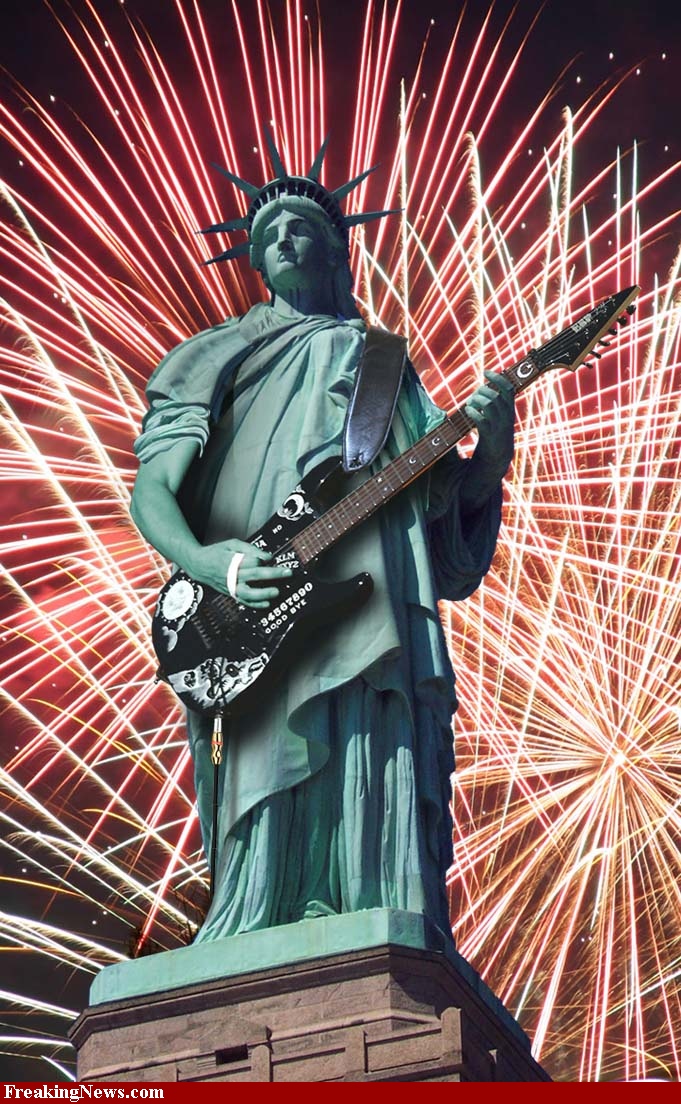|
Midterm1 (2013 midterm1 assignment) Sample Student Midterm Answers 2013 #1: Long Essay |
LITR 4333
|
 |
Marissa Turner
Seeing the Differences
Through reading and studying narratives,
individuals learn the similarities and differences of immigrants and minorities.
Though often they can be confused as the same, they both go through different
stages of assimilation and willingness to have arrived where they are presently.
Mixed in between these two types of individuals there are model minorities,
which also, become easily confused. Each of these groups relates to the dominant
culture differently, as seen through many different styles of texts.
Immigrants come here willingly from other
countries, mostly to improve their state of living for themselves and their
families. To come to America, they go through stages. First they leave their
original country and go through some type of journey to arrive here. Once they
are here, most of them go through some sort of shock due to the dramatic change
or the way they are treated by society. After a while immigrants begin to become
assimilated. Assimilation comes more and more as the generations of their family
increases. For example, first generations tend to keep the majority of the same
mindset as before they came to America, the second generation is more divided
between the homeland and America, and the third generation typically is
completely assimilated. Through assimilation, the first generation endures some
type of de-discovery of their self. In Anzia Yezierska’s
Soap and Water, a first generation
Russian immigrant goes through these stages. She comes to America wanting to
better herself through school and the reader can infer that she wants to live
the American dream. However, she faces the difficulties of assimilation because
she does not fit the “image” of the dominant culture even though she is a
successful student and obtains a job. Yezierska covers all of the immigrant
stages though her narrative, which allows the reader to understand an
immigrant’s point of view. Joseph Papaleo is another writer who portrays the
differences through the generations in his poem,
American Dream: First Report. His
poem shows the changes immigrants endure just to become assimilated into
American society by slowly cleaning up or wiping away their grandpa’s (the first
generations) ways and customs. Both of these texts show explain how immigrants
are willing to come to America and want to, at least in some ways, become
“American”.
As stated previously, immigrants come here
with the ideal to become successful in their pursuit of the American dream. They
want to become as much like the dominant culture as possible while still holding
on to their original values and morals. Immigrants cherish their family and are
hard workers because they know that is all they have to keep them alive and
thriving. Gish Jen is a writer who exemplifies these qualities quite well in
In the American Society. It is about
a father who has emigrated here with his family from China and pursued his goals
finding his idea of the American dream by owing his own pancake house. He is
like an American in that he is a business owner who obeys the laws and provides
for his family; however, the reader is reminded that he is still an immigrant
when his wife constantly mentions to him that he cannot do some of the same
things that he did in china by saying things like “but this here is the
U-S-of-A!” (IA 159). Stereotypically,
immigrants who want to assimilate change their image in order to “fit in”. The
father in this story however, finds that there is no point in this; he finds
more importance in raising and providing for his family. By only wearing
“ten-year-old shirts, with grease-spotted pants, to show how little he cared
what anyone thought” he proves that first generation immigrants have an
abundance of pride which they have brought with them to America (IA 159).
What is important to know is that there is a difference
between immigrants and minorities. Unlike immigrants, minorities did not come
here willingly; for example, they may have been forced here as slaves. And some
minorities, such as Native Americans, were actually here first; therefore, they
cannot be immigrants. Nevertheless, through the years, even though it was not
their choice to become “American”, minorities still take part in and show signs
of acculturation. This may be the reason that sometimes they become mistaken as
immigrants. The Narrative of the Life of
Frederick Douglass, an American Slave, shows a unique perspective on how
minorities can be seen by some as immigrants. Here, Frederick Douglass is not an
immigrant; however, he can relate because being from the south (the old country,
which was poor and full of slavery) he found a way to migrate or “immigrate” to
the north (the new world, which represented freedom and the “American dream”).
This narrative explains how opportunity was in the north, and while African
Americans may not have come here willingly, some of them eventually came to the
north willingly (like an immigrant). Louise Erdrich’s
American Horse is also an example of
a narrative that shows how minorities, in this case, Native Americans, are not
immigrants pursuing the “American dream”; yet, they sometimes show signs of
acculturation. For instance, Uncle Lawrence’s “smoking jacket” was that of the
dominant cultures and he “wore a thick white corset laced up the front with a
striped sneakers’ lace” and had a “glass eye” and “set of dentures” (IA
213).
For minorities their culture is sometimes looked down upon by
the majority of the dominant culture.
Opposite of immigrants, they do not easily give into all of the ways of
the “American way”. They put up more of a fight, and this is one of their big
differences. Since Native Americans were here first and African Americans were
forced against their will to be here, these two groups rightly feel as though
they have the right to stick to their customs, beliefs and ways of doing things.
For example, my mother is half Italian and half Native American, and on occasion
we will join our family at a Powwow. When I am there, it is like a whole
different world to me and I grow a strong sense of pride knowing that through
the years and struggles that Native Americans have held on to so much of their
original culture and have the right to do so. In the pieces of literature we
have studied, one can see a huge difference in the way immigrants handle
American laws verses the way minorities do. In
American Horse, Albertine and Uncle
Lawrence constantly put up a strong fight against the law that said that her
child was going to be taken away from them. They did not easily give into what
was theirs being taken away from them, until it was forced and they had no other
options. In contrast, in the immigrant Narrative,
In the Land of the Free, by Sui Sin
Far, the mother, Lae Choo, and the father, learned that they had to give up
their child until it was proven with paperwork that the child did, in fact,
belong to them. Of course they did not want to hand over their baby to complete
strangers; however, being immigrants, they knew that it was the law and what
they had to do. This is a perfect instance of the differences commonly seen
between immigrants and minorities; immigrants are willing to come to America,
thus willing to follow the laws, while minorities, were forced here, or forced
out of their rightful land, and therefore, are more reluctant to obey laws that
they do not necessarily agree with.
There is another type of immigrant
that sometimes gets mistaken for being solely minorities. That is the model
minority group. This group is made up of immigrants who are most willing to
assimilate as much as possible. The majority of them have already built trust in
the American system. Their families are stable and come here already having
money to start a well-off life. They are known for having interest in their
education and business careers. The family in Gish Jen’s,
In the American Society, is a prime
example of a “model minority” family. The father owns his own business and is
highly concerned with his children’s education. He also makes sure that he is
not breaking any laws though the individuals he has working for him being
illegal immigrants. This group of immigrants strives to assimilate into the
dominant culture the most, while also keeping some of their same moral and
family values. Whereas, regular immigrants and minorities tend to get looked
down upon by society no matter how hard they try, the model minority group has
the upper hand as far as “fitting in” to the dominant culture. This can also
make things harder for this group however, because they have a higher
expectation to live up to. They are
expected to be extremely smart and know how to act around the dominant culture
and sometimes this can cause problems such as the one read in
In the American Society. The family
goes to a party full of individuals of the dominant culture and the environment
becomes hostile and pride of the Chinese father and the “white male” causes a
type of altercation. I believe that if the Chinese family were in fact, of the
“dominant” race that this issue would have never occurred. In a way, one could
assume that the model minority group might just not have it so easy because of
all the expectations that they must live up to, while also, they might be seen
as betraying their own people as Harmony, the Native American police officer,
was viewed in American Horse.
Reading multiple texts and narratives regarding immigrants
and minorities provides a greater inside look in the lives of different cultures
of people. I know for many people, immigrants are seen as people who come to
America to take advantage of our government and minorities are people who are
strictly seen as poor or lazy. I believe everyone should have to read the
histories and narratives to open the eyes of these individuals who are full of
ignorance. If this could be the case maybe immigrants could be known as people
who come to this country in search to better the lives of their families and the
American dream, to escape the struggles and poverty of their homeland. And
minorities can then be seen as people who have as much, if not more rights, than
the dominant culture and that they too are part of the people who made up
America in the first place. Through reading the texts, people can gain a look
over the other side of the fence, if you will, and obtain an entirely new
perspective on different cultures. One can learn the reasoning behind certain
traditions and understand that just because ones culture is different from their
own does not make it any less significant. Some Americans think of immigrants as
if they are trying to take over the land and that they should go back to where
they came from, they do not want immigrants to be here. In my opinion, I believe
the people who feel this way should read and take a minute to look deeply inside
of Chrystos’ poem, I Have Not Signed a
Treaty with the United States Government, for example. Maybe this will cause
people who think like that to reconsider, that some Native Americans think the
same way about them. They came to America which was not originally their land
and took it over, giving the Natives no options and forcing them apart from what
was rightfully theirs. Maybe reading and studying more examples like this will
teach people that thinking that one’s own culture is greater than another is
wrong in more than a few ways. It really makes individuals grow an appreciation
of other cultures than their own. I hate to say that these texts can cause
sympathy for certain groups; however, maybe sometimes that sympathy is needed in
order to be treated kindly and with respect. Besides, that is what America is
made of right? Different colors, religions, and shapes of all kinds.



